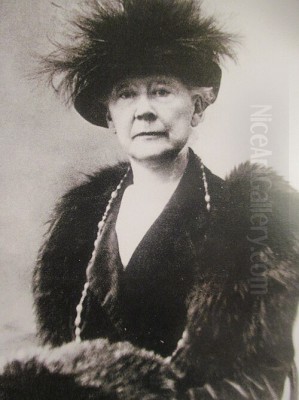
Absolutely, here is a comprehensive article about Mary Cassatt, incorporating the information you provided and expanding upon it with details about her life, work, and connections within the art world.
Mary Cassatt: An American Impressionist's Enduring Legacy
Mary Cassatt (1844–1926) stands as a pivotal figure in the history of Impressionism, a movement predominantly associated with France, yet significantly shaped by this remarkable American artist. Her life and work spanned a transformative period in art, and her unique perspective, particularly on the intimate lives of women and children, left an indelible mark. While she was the only American invited to exhibit with the French Impressionists, her artistic journey was a testament to her unwavering determination and keen artistic sensibility.
Early Life and Artistic Beginnings
Born Mary Stevenson Cassatt on May 22, 1844, in Allegheny City, Pennsylvania (now part of Pittsburgh), Cassatt hailed from a prosperous upper-middle-class family. Her father, Robert Simpson Cassat, was a successful stockbroker and real estate investor, while her mother, Katherine Kelso Johnston, came from a banking family. Growing up, Cassatt received a privileged education, including lessons in music, drawing, and painting, experiences that undoubtedly nurtured her burgeoning artistic inclinations.
Despite her family's initial reservations about a woman pursuing a professional art career – a path deemed unconventional and perhaps unsuitable for a woman of her social standing – Cassatt was resolute. In 1860, at the young age of sixteen, she enrolled at the Pennsylvania Academy of the Fine Arts in Philadelphia. Although she found the curriculum somewhat rigid and the male students condescending, her time there solidified her commitment to art.
European Studies and the Call of Paris
Recognizing the limitations of formal art education in the United States at the time, Cassatt, like many aspiring American artists of her generation, longed to study in Europe. The outbreak of the American Civil War in 1861 temporarily disrupted her plans, but in 1866, she finally made the pivotal move to Paris. This marked the true beginning of her artistic odyssey.
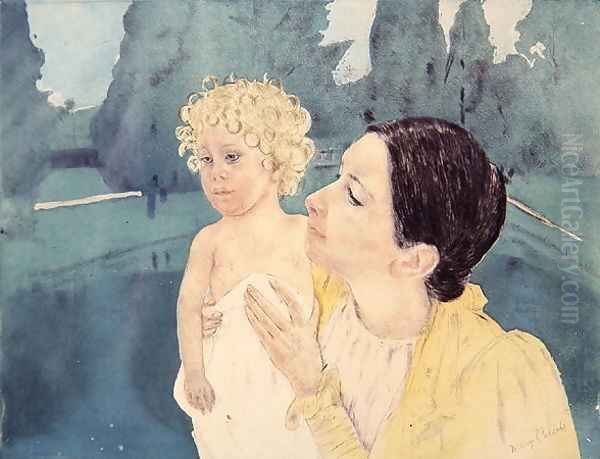
In Paris, the traditional academic system, exemplified by the Salon, initially held sway. Cassatt studied with prominent academic painters like Jean-Léon Gérôme and Charles Chaplin. However, her independent spirit and burgeoning interest in contemporary art soon led her to explore beyond the confines of the traditional ateliers. She traveled throughout Europe, visiting Spain and Italy, immersing herself in the works of the Old Masters. In Parma, Italy, she studied the techniques of Correggio, and in Spain, she was drawn to the art of Titian, Velázquez, Rubens, and Murillo. These experiences broadened her artistic horizons and informed her developing style.
Encounter with Impressionism and the Influence of Degas
A pivotal moment in Cassatt's career came in 1877 when she was invited by Edgar Degas to exhibit with the Impressionists. She had seen their unconventional works in gallery windows and was captivated by their fresh approach to light, color, and everyday subject matter. This invitation was a significant recognition of her talent and a turning point, leading her to break away from the traditional Salon system, which had often rejected her submissions or placed them poorly.
Cassatt and Degas developed a close friendship and artistic relationship. Degas became a mentor, introducing her to new techniques, particularly the use of pastel and printmaking. He admired her talent and her dedication. Their artistic exchange was mutually beneficial, with each influencing the other's work. While their friendship was primarily artistic, it was marked by shared artistic passions and lively debates. Their joint project, a planned publication of prints titled Le Jour et la Nuit (Day and Night), unfortunately, never materialized.
Cassatt’s embrace of Impressionism was reflected in her adoption of its characteristic features: bright, unmixed colors, visible brushstrokes, and a focus on capturing fleeting moments of modern life. She participated in four of the eight Impressionist exhibitions, starting in 1879. Exhibiting alongside artists like Claude Monet, Pierre-Auguste Renoir, Camille Pissarro, and Alfred Sisley placed her firmly within the avant-garde of her time.
Themes of Motherhood and Childhood
One of the most enduring aspects of Cassatt's art is her sensitive and unsentimental portrayal of mothers and children. While this theme was not unique to her, her approach was groundbreaking. She depicted these relationships with a rare intimacy and honesty, capturing the tender bonds, everyday routines, and often unglamorous realities of motherhood. Her works avoided idealization, instead focusing on the emotional depth and physical closeness between mothers and their offspring.
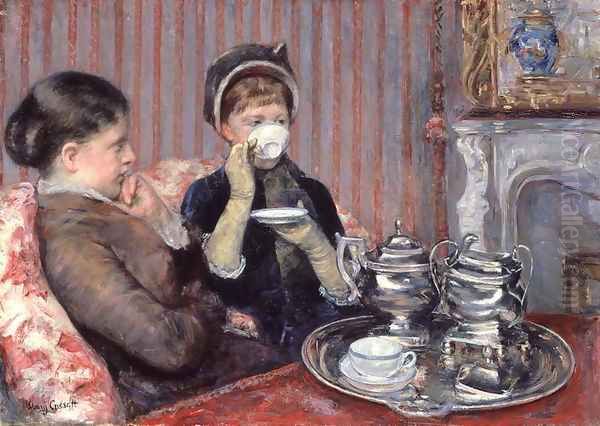
Her subject matter was partly influenced by her position as a woman in a patriarchal society. While her male Impressionist counterparts could freely depict scenes of Parisian nightlife and public spaces, societal norms limited the access of women like Cassatt to such environments. Instead, she turned her gaze inward, to the domestic sphere, transforming seemingly ordinary moments into compelling works of art. Her ability to capture the gestures, expressions, and subtle interactions between mothers and children resonated deeply with viewers and continues to do so today.
Key Works and Artistic Style
Cassatt's artistic style evolved throughout her career, incorporating influences from Impressionism, Japanese prints, and her studies of Old Masters. Her mature work is characterized by strong lines, bold compositions, and a mastery of various mediums, including oil painting, pastel, and printmaking, particularly drypoint and etching.
Some of her most celebrated works include:
The Bath (1893): A masterful pastel depicting a mother bathing her child, showcasing her skill in rendering form and color. The influence of Japanese prints can be seen in the flattened perspective and bold outlines.
Mother and Child (1898): A classic example of her favored theme, this painting captures a tender moment of interaction between mother and child, with soft brushstrokes and a warm palette.
The Child's Bath (1893): Another iconic representation of maternal care, noted for its dynamic composition and vibrant use of color.
The Tea (1880): A depiction of a social ritual among women, highlighting her interest in capturing the everyday lives of women.
Summertime (1894): This painting of a woman and child in a boat exemplifies her Impressionist sensibilities with its depiction of light and water.
Girl in a Blue Armchair (1878): Considered one of her earliest truly Impressionist works, it demonstrates her move towards looser brushwork and a more spontaneous style.
Breakfast in Bed (1897): An intimate scene of a mother and child, rendered with a soft, luminous quality.
Reading 'Le Figaro' (Portrait of the Artist's Mother) (1878): A portrait of her mother, capturing a moment of quiet contemplation, showcasing her skill in portraiture.
The Boating Party (1893-94): A bold and flattened composition, again showing the influence of Japanese prints, depicting a family outing.
Woman with a Pearl Necklace in a Loge (1879): A scene of Parisian social life, reflecting the Impressionists' interest in modern subjects.
Beyond these well-known pieces, Cassatt also produced a significant body of prints, including a series of ten color prints exhibited in 1891. These prints, inspired by Japanese woodblock prints, are considered among her most innovative works, demonstrating her technical virtuosity and daring compositions.
Interactions with Other Artists and Intellectuals
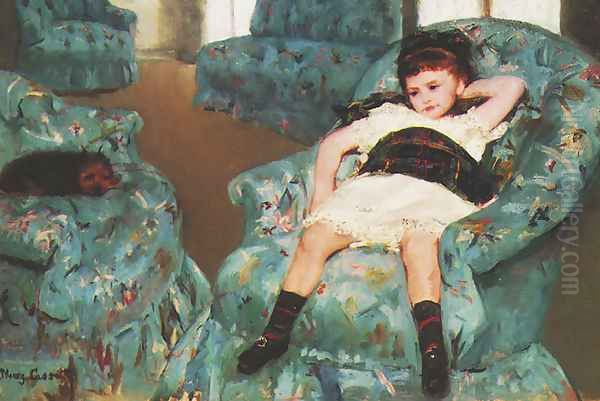
Cassatt's time in Paris brought her into contact with a wide circle of artists, writers, and intellectuals. In addition to her close relationship with Degas, she interacted with other prominent figures of the time. She was a friend and colleague of Berthe Morisot, another female Impressionist painter, with whom she shared a mutual respect and artistic dialogue. They often discussed the challenges and experiences of being women artists in a male-dominated field.
She also knew and exchanged ideas with artists such as Édouard Manet, Claude Monet, Camille Pissarro, Auguste Renoir, Alfred Sisley, Paul Cézanne, and Mary Cassatt. Her engagement with these artists enriched her own practice and contributed to the vibrant artistic atmosphere of late 19th-century Paris. While not as deeply involved with the Post-Impressionists, her later work, with its stronger lines and more defined forms, shows a move away from pure Impressionism, perhaps reflecting the broader artistic shifts of the period.
Cassatt also played a crucial role in introducing American collectors to Impressionist art. She advised wealthy American friends and family members on acquiring works by Impressionist painters, thereby helping to build important collections that are now housed in major American museums. Her efforts were instrumental in establishing the reputation of Impressionism in the United States.
Advocacy for Women's Rights and Later Life
Beyond her artistic pursuits, Mary Cassatt was a fervent advocate for women's rights, particularly the right to vote. She believed strongly in the intellectual and creative capabilities of women and challenged the societal constraints placed upon them. She actively supported the suffragist movement, participating in fundraising efforts and organizing exhibitions to benefit the cause.
A notable example of her commitment was the exhibition she organized in 1915, showcasing her own work alongside that of Impressionist painters like Degas, to raise funds for women's suffrage. Her outspoken support for this controversial movement sometimes caused tension within her own family, with some relatives opposing her views. Her monumental mural "Modern Woman," created for the Women's Building at the 1893 World's Columbian Exposition in Chicago, was a powerful visual statement celebrating the independence and achievements of modern women.
In her later years, Cassatt's health began to decline. She suffered from diabetes, rheumatism, neuralgia, and, most significantly, cataracts, which severely impaired her vision. By 1914, she was forced to stop painting, a devastating blow for an artist whose life was so deeply intertwined with her creative output. Despite these challenges, she remained engaged with the art world and continued to offer advice and encouragement to younger artists.
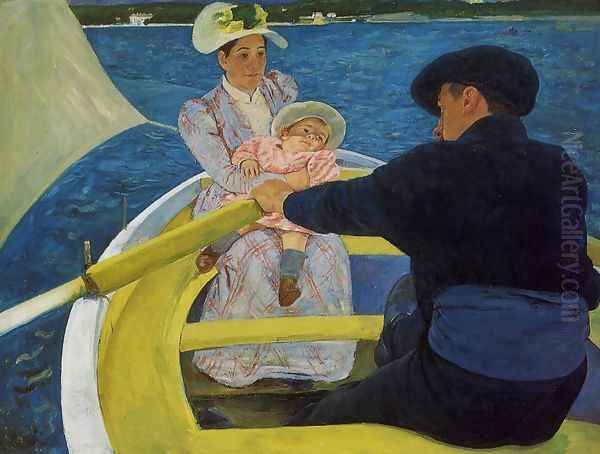
Mary Cassatt passed away on June 14, 1926, at her country home, Château de Beaufresne, near Paris, at the age of 82.
Legacy and Enduring Significance
Mary Cassatt's legacy is multifaceted and continues to resonate today. As a pioneering American artist who successfully navigated the European art scene, she broke barriers and paved the way for future generations of American artists, especially women. Her unique perspective on the lives of women and children offered a powerful and moving portrayal of themes often overlooked or sentimentalized by her male contemporaries.
Her artistic innovations, particularly in printmaking and her synthesis of Impressionist and Japanese influences, demonstrated her technical prowess and her willingness to experiment. Beyond her artistic achievements, her unwavering support for women's rights and her role in advocating for women artists cemented her place as a significant figure in both art history and the history of feminism.
Today, Mary Cassatt's works are highly sought after and are held in the collections of major museums around the world. Institutions such as the Philadelphia Museum of Art, the National Gallery of Art in Washington, D.C., the Metropolitan Museum of Art in New York, the Art Institute of Chicago, the Musée d'Orsay in Paris, and many others proudly display her paintings, pastels, and prints. Recent exhibitions, such as "Mary Cassatt at Work" in San Francisco, continue to bring new scholarly attention to her life and artistic process, reaffirming her enduring importance in the history of modern art. Mary Cassatt's journey from a privileged upbringing in Pennsylvania to her position as a celebrated figure in the Parisian avant-garde is a compelling story of talent, perseverance, and a commitment to both artistic excellence and social change.